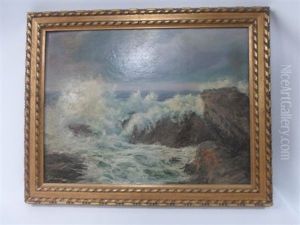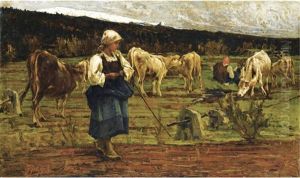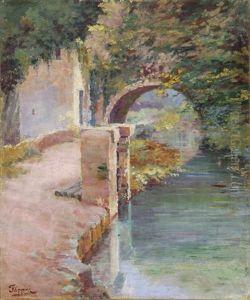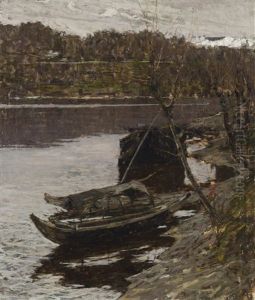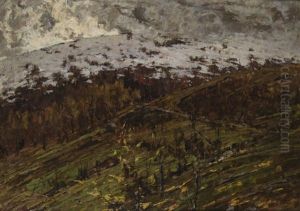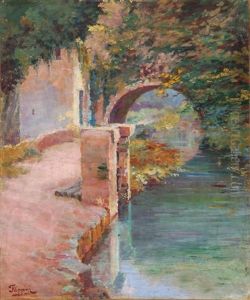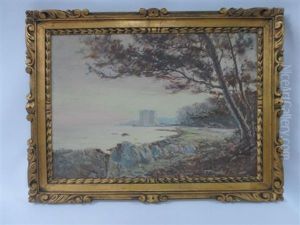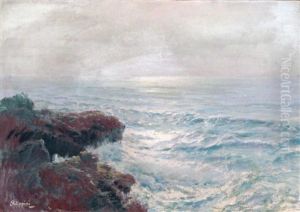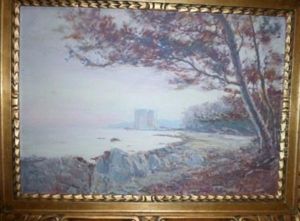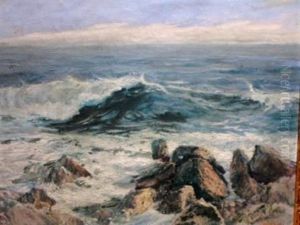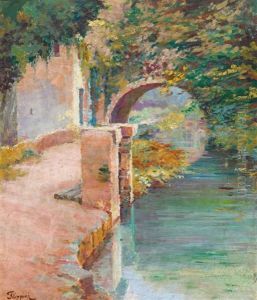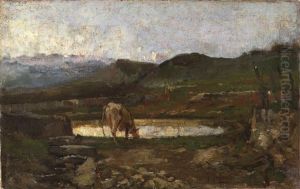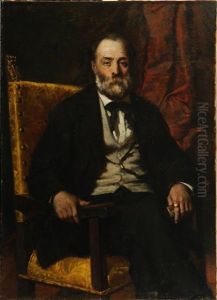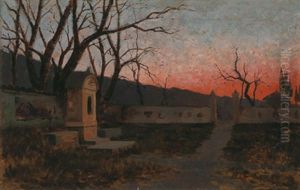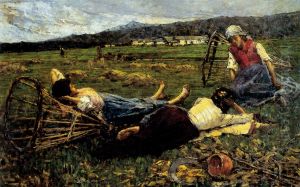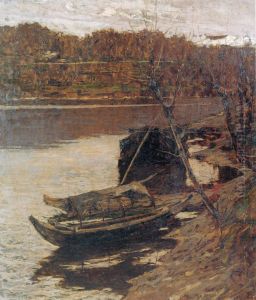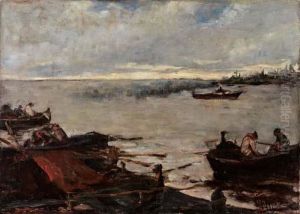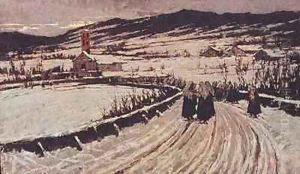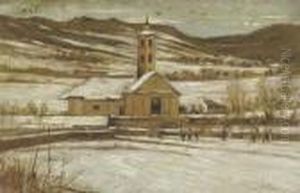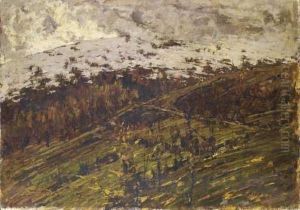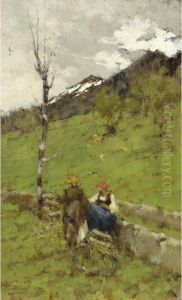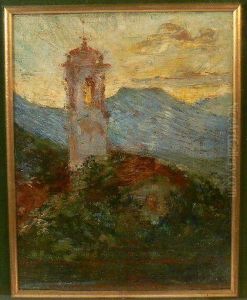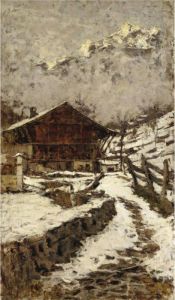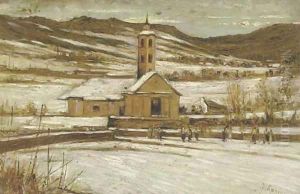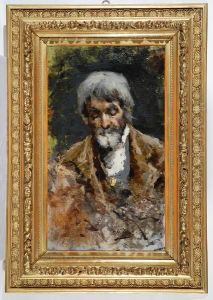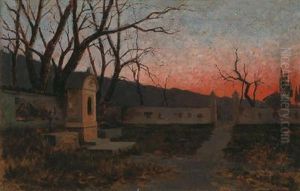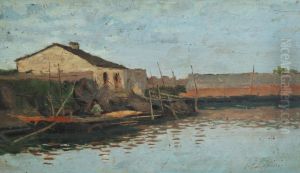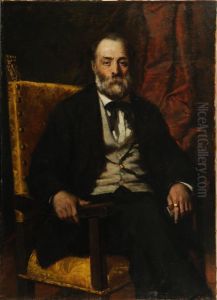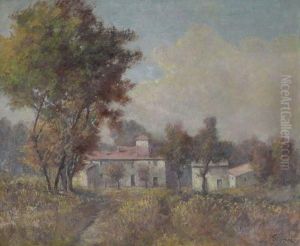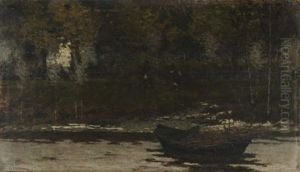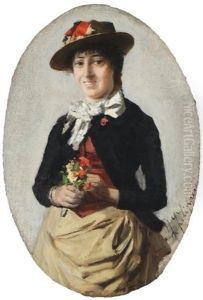Francesco Filippini Paintings
Francesco Filippini was an influential Italian painter, born in Brescia in 1853. He played a significant role in the Italian art scene of the late 19th century, particularly within the Lombard naturalism movement. Filippini's early life was marked by hardship and poverty, which influenced the themes and subjects of his later works. Despite these challenges, he showed a remarkable talent for art from a young age, prompting his admission to the Accademia di Belle Arti in Brescia, where he honed his skills and developed his distinctive style.
Filippini's art was deeply rooted in the naturalistic depiction of landscapes and rural life. He was inspired by the beauty of the Italian countryside, and his works often featured scenes of the Lombard landscape, characterized by a sensitive use of light and color. He was particularly adept at capturing the changing moods of nature, from tranquil sunlit fields to stormy skies, imbuing his landscapes with a sense of emotion and atmosphere that resonated with viewers.
Throughout his career, Filippini was active in promoting the importance of naturalism in art. He argued against the academic traditions of the time, advocating for the direct observation of nature as the foundation of artistic creation. This philosophy not only influenced his own work but also inspired a generation of Italian artists who followed in his footsteps.
Despite his contributions to the Italian art world, Filippini's life was cut short when he died in 1895 at the age of 42. His premature death was a significant loss to the art community, but his legacy lived on. Filippini's work continued to be celebrated and studied, with his paintings held in high regard in museums and private collections around the world. His influence on the development of naturalism in Italy and his dedication to capturing the essence of the Italian landscape have secured his place as a key figure in the history of 19th-century Italian art.
